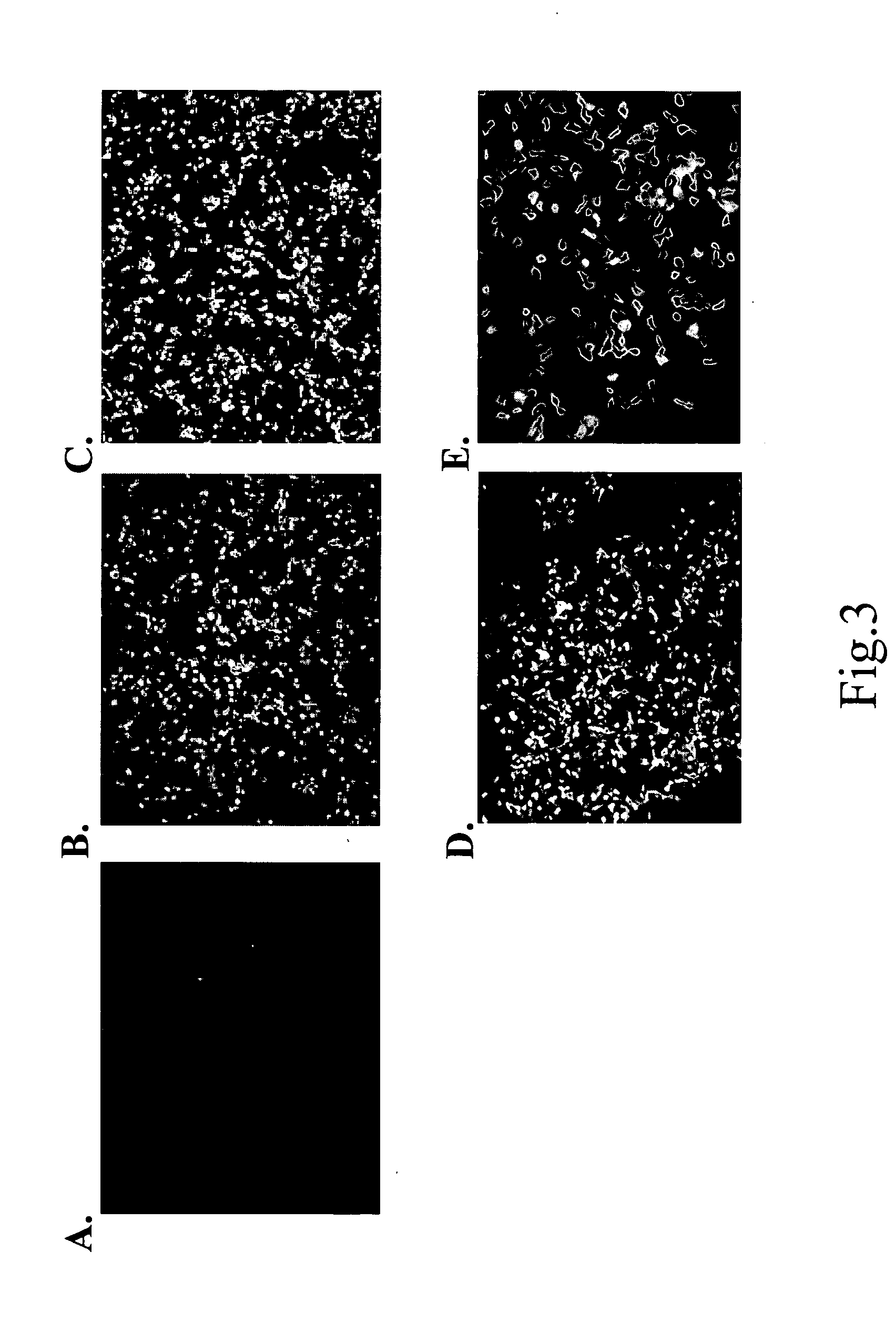Human soluble neuropilin-1 primary polyadenylation signal and uses thereof
a human soluble, polyadenylation technology, applied in the field of eukaryotic gene expression, can solve problems such as problematic length of these sequences, and achieve the effect of facilitating transport to the cytoplasm and enhancing translation from the rna
- Summary
- Abstract
- Description
- Claims
- Application Information
AI Technical Summary
Benefits of technology
Problems solved by technology
Method used
Image
Examples
example 1
a. EXAMPLE 1
[0123] RT-PCR, mRNA Isolation and Sequencing
[0124] Cells were homogenized and RNA isolated using the RNAqueous kit (Ambion Inc., Austin, Tex.). RT-PCR was then performed using an oligo d(T) reverse primer which at the 3′ end had the following “linker” sequence: 5′-GGCCACGCGTCGACTAGTACTTTTTT-3′ (SEQ ID NO:2). hrGFP-mRNA amplification was then performed, using the forward primer and reverse primer designed to anneal to the “linker” sequence to enable the identification of the exact point of polyadenylation. Sequencing was undertaken using the di-deoxy chain termination reaction and an ABI PRISM 310®.
example 2
b. EXAMPLE 2
[0125] Plasmid Preparation
[0126] Human recombinant green fluorescent protein (hrGFP) was amplified by PCR to either contain the dual function sNRP-poly (A) / termination signal, -AATAAA- (the termination codon is underlined) or a disrupted polyadenylation signal (-AATGAA-) that contains an alternative termination codon. The PCR fragments were ligated into the pAAV or pUC18 vectors. The green fluorescent protein was under the transcriptional control of the cytomegalovirus (CMV) promoter. The constructions were confirmed by direct sequencing of the transgene insert.
[0127] Direct sequencing confirmed the successful mutagenesis of the penultimate codon of hrGFP from GTG to AAA and the insertion of the human soluble neuropilin-1 (sNRP) stop codon TAA followed by the remainder of the sNRP polyadenylation signal. The change in the codon prior to the termination codon replaces the amino acid valine for lysine in the native protein. A control construct was engineered in which the...
example 3
c. EXAMPLE 3
[0128] Transfecting Experiments
[0129] Human 293T microvascular endothelial cells were grown to 50% confluence in Dulbecco's Modified Eagle Medium (D-MEM, 5% FBS, 1% P&S) at 37° C., normoxia. The cells were transfected by the calcium phosphate co-precipitation method and cultured in D-MEM at 37° C., normoxia, for 24 hours. Thereafter the media was replaced with D-MEM containing 10 mM Na butyrate and 20 mM Hepes buffer (pH 7.02). Translation of hrGFP protein was thein visualized using a Leica DMIRB fluorescence microscope.
[0130] 293T cells were transfected with adeno-associated viral plasmids (pAAV) or the expression vector pUC18 containing appropriate inserts (Table 5). pAAV containing human recombinant green fluorescent protein (hrGFP) whose transcription was driven by the CMV promoter with polyadenylation directed by the SV40 poly (A) signal was used as a positive control (pAAV-cmv-hrGFP-SV40). pUC18 carrying hrGFP with no polyadenylation signal were used as a negativ...
PUM
| Property | Measurement | Unit |
|---|---|---|
| Volume | aaaaa | aaaaa |
| Volume | aaaaa | aaaaa |
| Volume | aaaaa | aaaaa |
Abstract
Description
Claims
Application Information
 Login to View More
Login to View More - R&D
- Intellectual Property
- Life Sciences
- Materials
- Tech Scout
- Unparalleled Data Quality
- Higher Quality Content
- 60% Fewer Hallucinations
Browse by: Latest US Patents, China's latest patents, Technical Efficacy Thesaurus, Application Domain, Technology Topic, Popular Technical Reports.
© 2025 PatSnap. All rights reserved.Legal|Privacy policy|Modern Slavery Act Transparency Statement|Sitemap|About US| Contact US: help@patsnap.com



